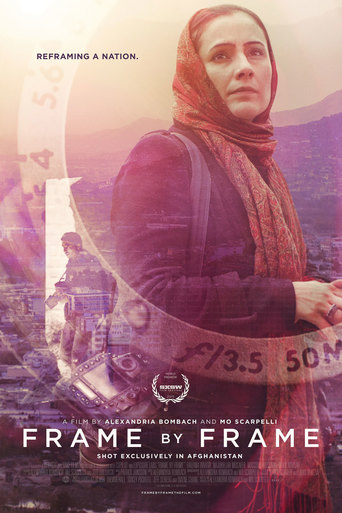



Gripping story with well-crafted characters
The plot isn't so bad, but the pace of storytelling is too slow which makes people bored. Certain moments are so obvious and unnecessary for the main plot. I would've fast-forwarded those moments if it was an online streaming. The ending looks like implying a sequel, not sure if this movie will get one
View MoreIt's a good bad... and worth a popcorn matinée. While it's easy to lament what could have been...
View MoreOne of the most extraordinary films you will see this year. Take that as you want.
View MoreAlthough the topic is centered about the personal lives of several Afghan photographers, both journalism related & independent, what we see are the people of Afghanistan and their environs as close up as any lens can provide. And, obviously the tragedy of conflict over the many, many years. As an aside, I encourage everyone to support the schools in that country especially those educating females.
View MoreGreetings again from the darkness. Sitting comfortably in our recliners or desk chairs, we have come to take for granted the exceptional work of photojournalists from inside locations we ourselves would never risk going. These folks risk their lives to capture otherwise unimaginable conditions and injustice from around the world. Co-directors Alexandria Bombach and Mo Scarpelli profile four courageous photographers from Afghanistan.Documenting the truth with a camera seems so simple; however, as one of the photographers explains, he often finds himself running towards the spot from which everyone else is running away. Put yourself in this situation you are taking photos of a solemn religious ceremony when suddenly a bomb explodes and bodies, limbs, blood and destruction are everywhere. Do you stay to record the fallout and help the injured, or do you run away from the scene in case another bomb is set to detonate? This film doesn't judge, but instead it matter-of-factly points out that these photographers understand the role they play in exposing such evil and cruelty. In other words, they stay.One of the photographers profiled is Massoud, a Pulitzer Prize winner for his stunning photo of "The Girl in Green". Massoud is now head photographer of AP – Kabul, and he remains in touch with the girl and her family, while maintaining his mission of documenting history in his country.The most heart-breaking and anger-inducing segment involves Massoud's wife Farzana, who is also a photojournalist. Yes, a female photojournalist in Afghanistan. Her personal story is so touching as she was a mere 13 year old girl when she had her first run-in with The Taliban, which had seized control in 1996 - making photography, education, history and any semblance of women's rights a thing of the past. She shares her story which serves as her inspiration to record the injustices toward women that remain in the country, despite the social improvements since The Taliban was ousted from Kabul in 2001.This review is no place for all the details covered in this emotional and powerful and informative documentary, but to paraphrase one of the photographers "my heart was crying but my eyes had no tears left". Please don't mistake what these brave people do with the personal infringements of the celebrity paparazzi. The only similarities are the cameras they carry. These photojournalists and the others like them around the globe understand that their "empathy brings meaning to their photographs", and that photographs are the only assurance that a segment of the population will never again be "voiceless".
View More